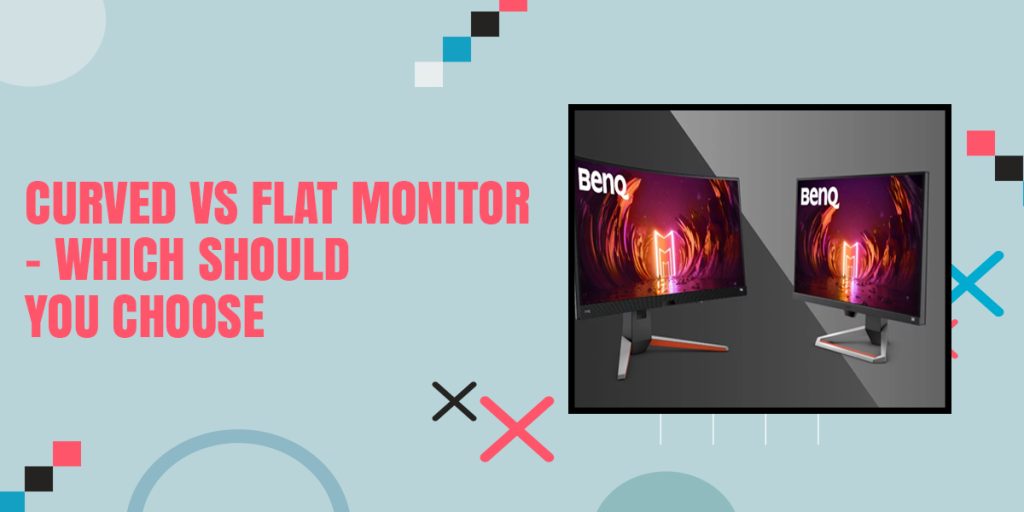
Curved vs Flat Monitor – Which should you choose? If you want to know more about it, read the article in full to get complete information.
We’ve all heard the argument: “you can do more on a computer than you can on a monitor.” But is that true? Is there something about the screen and the way we interact with it that makes it more powerful than our bodies?
I think that we use screens in ways that are fundamentally different from other tools. They allow us to work at a distance, to multitask, to be creative.
The screens are just tools. And like any tool, they can be used for good or for bad. If you use them right, they will help you get things done. If you misuse them, they will hurt you.
Misusing a hammer is easy. Misusing a scalpel is hard. That’s why screen design is so important. The first step is learning how to use your monitor as an effective tool in understanding what it is you are trying to accomplish.
Contents
Curved Monitors
Curved monitors are designed to make your body fit better into the screen. They were designed with the understanding that our bodies aren’t straight lines. Our heads are round, our arms are long, and our fingers are fat.
The first thing you should know about curved monitors is that they are more expensive. You can save money by buying a flat-screen, but you might not see much of a difference.
This is because the curvature of the screen doesn’t affect the way that we interact with it. Curved screens look cool and are easier to hold. But they don’t necessarily make you more productive.
Pros And Cons Of Curved Monitors
Pros:
- Immersive Viewing Experience
- Improved Depth Perception
- Wider Field Of View
Cons:
- Expensive
- Screen Glare
- Limited Adjustment Options
Best Curved Monitor
Samsung CF791 Series 34-Inch Curved Widescreen Monitor
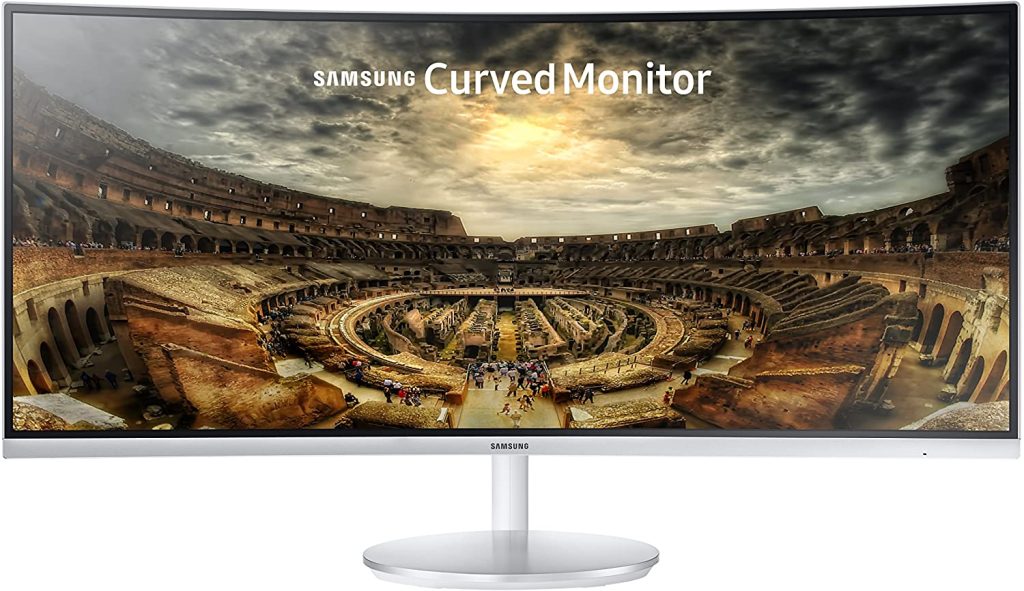
The Samsung CF791 series is a curved monitor, featuring a 34-inch curved screen with 3840 x 1080 resolution and a pixel density of 227 PPI. It has a refresh rate of 60 Hz and a maximum brightness of 500 nits.
The Samsung CF791 is an LED display and it has a diagonal size of 34 inches. It weighs 2.4 pounds and has a VESA rating of 100 x 100mm. It comes with DisplayPort 3.2, HDMI 1.4, component video, and composite video inputs and outputs.
This display has a USB-A 2.0 port for data transfer and power. It also has four USB-A 3.0 ports and one USB-C 4.1 port. It supports DVI, HDMI, and DisplayPort connections.
It also has a headphone jack, a speaker, a microphone input, and a USB-C port. It is a curved monitor and it has a wide viewing angle. The monitor offers a 178-degree horizontal viewing angle and a 160-degree vertical viewing angle.
The Benefits Of Curved Monitor
A curved monitor can offer a more immersive experience than a traditional flat monitor. The curve can help reduce eye strain and fatigue, and can also provide a wider field of view. Curved monitors can also offer a more aesthetically pleasing look than flat monitors.
How a curved monitor can improve your gaming experience
There are a few benefits of using a curved monitor for gaming. One is that it can help to reduce eye strain, as the curve allows your eyes to scan the screen more naturally. This can be especially beneficial if you spend a lot of time gaming.
Another benefit is that a curved monitor can provide a wider field of view. This can be helpful in games where you need to be aware of your surroundings, as you’ll be able to see more of the game world.
Lastly, a curved monitor can also improve immersion. The curve can make it feel like you’re more in the game, as it fills more of your field of view. This can be a great way to improve your gaming experience.
Flat Monitors
Flat screens are less expensive than curved screens, but they are also less powerful. They don’t allow you to do anything that you can’t do on a flat monitor.
They are also less portable since they are much thicker and heavier than their curved counterparts. But they can be used to create some pretty cool effects. And they are good for people who work in cramped spaces or at heights.
Immediately below are listed the top ten reasons flat screens are superior to curved screens:
Pros And Cons Of Flat Screen Monitor
Pros:
- They are lighter.
- Flatscreens are cheaper than curved displays.
- You can use them in almost any workspace.
- You can use them in almost any environment.
- They are easier to hold.
- They have a wider viewing angle.
Cons:
- Compatibility
- Limited color gamut
- Limited viewing angle
- Lack of immersion
- Environmental impact
But if you’re watching a movie or working on a document, you might find that you can get more work done on a curved monitor.
Best Flat Monitor
BenQ 32-inch, 4K UHD Monitor, IPS Panel
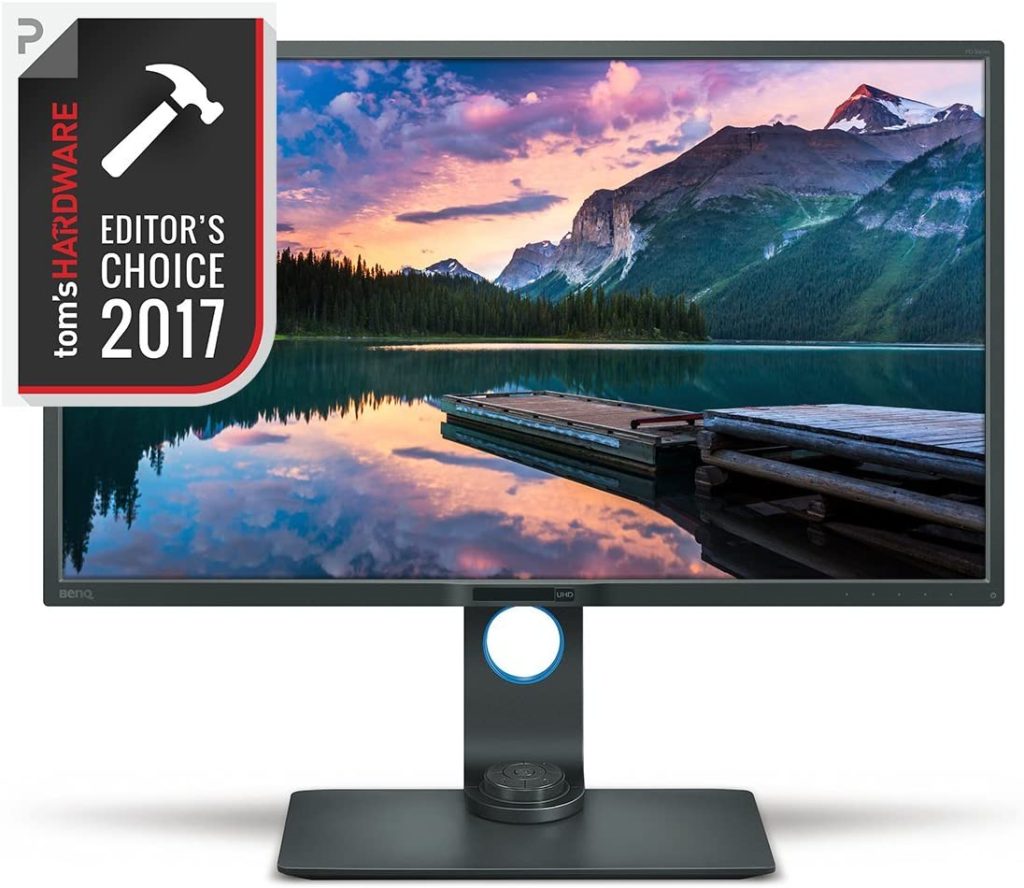
The BenQ 32-inch 4K UHD Monitor is a 32-inch curved monitor with a resolution of 3840 x 2160 pixels. It has a refresh rate of 60 Hz and a maximum brightness of 350 nits.
The monitor has a diagonal size of 32 inches and weighs 2.9 pounds. It has a VESA rating of 100 x 100 mm and it comes with DisplayPort 3.2, HDMI 4.4, DVI, and D-Sub ports.
This monitor has a USB-C port for power and data transfer. The BenQ 32-inch 4K UHD monitor is an LED display and it has a resolution of 3840 x 2160 pixels. It has a refresh rate of 60 Hz. It has a viewing angle of 178 degrees horizontal and 160 degrees vertical.
Size, Ergonomics, And Flexibility Of Curved And Flat Monitors
Size
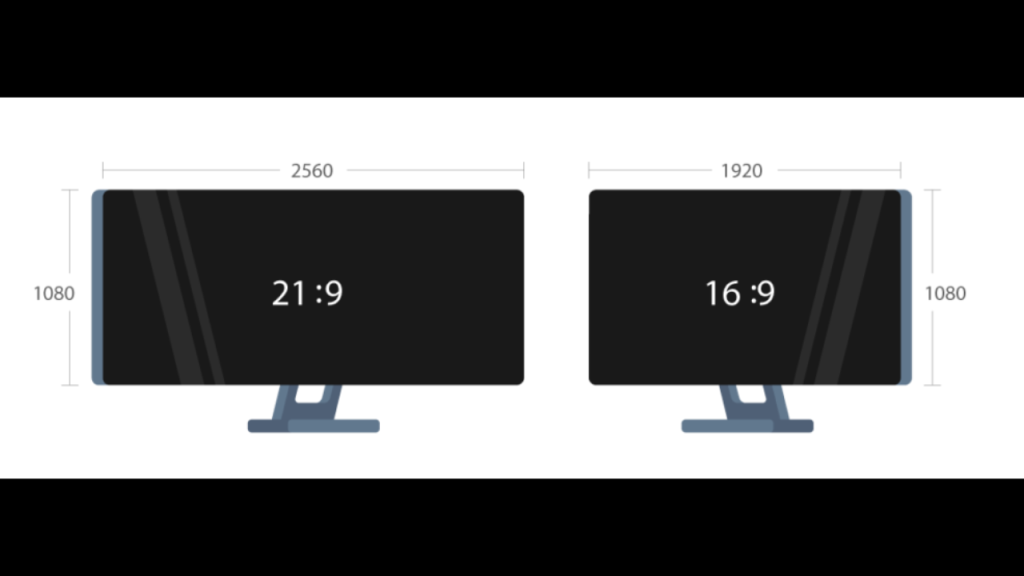
Curved monitors are more expensive than flat-screen monitors. If you have a desk that’s too small for your monitor, then it will be uncomfortable to work with.
A curved monitor will fit a larger desk, which makes it more comfortable. But if you have a large desk, you might not notice much of a difference between a curved and a flat monitor.
Only if you have a very small desk will you see a considerable advantage with a curved monitor. Curved displays are also more flexible. If you want to mount the monitor vertically instead of horizontally, or vice versa, it will be much easier to do with a curved display.
With a flat display, you will need to remove the stand and reorient the display before you can do anything else.
With a curved monitor, you just flip it over. The biggest reason curved displays are popular is that they fill up more of your peripheral vision, which allows you to focus on your work instead of being distracted by what’s happening around you.
Ergonomics
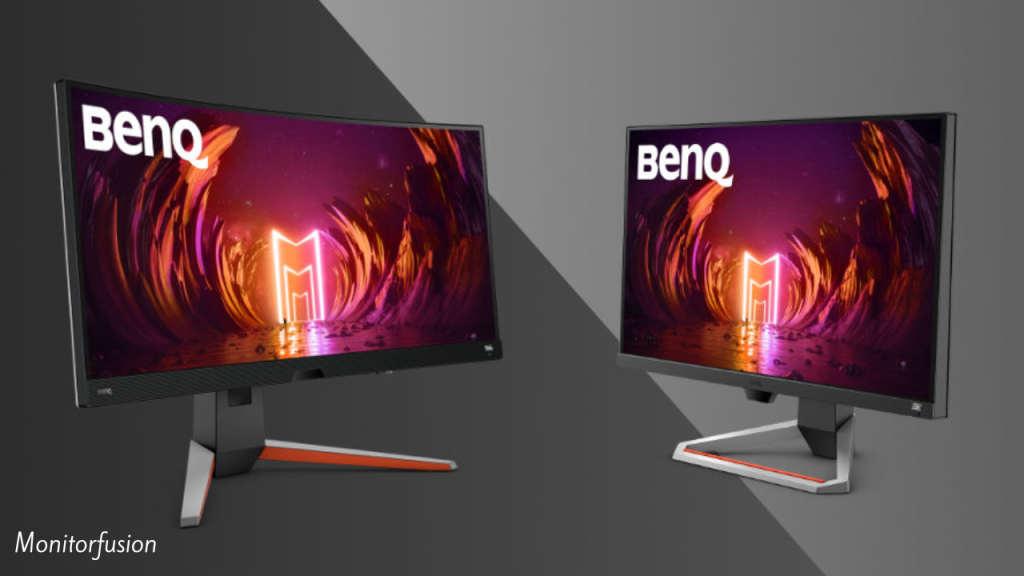
If you want to be able to see what’s happening in the corners of your office or home, you should get a curved monitor. The curve on a curved monitor allows you to see more of your surroundings, which can make it easier to find things.
It’s also easier to find the edge of a curved monitor because it’s curved. Flat screens are flat. They don’t curve, so you have to look at them from a different angle to see the edge.
With that being said, most people won’t have a problem with a flat-screen monitor if they have enough space to set it up. The biggest difference between a flat screen and a curved screen is the way they reflect light. A flat screen will reflect light in all directions equally.
A curved screen will reflect light in certain directions more than others. This makes it easier to read what’s on the screen and reduces eyestrain. A lot of people think eyestrain is caused by glare.
Flexibility
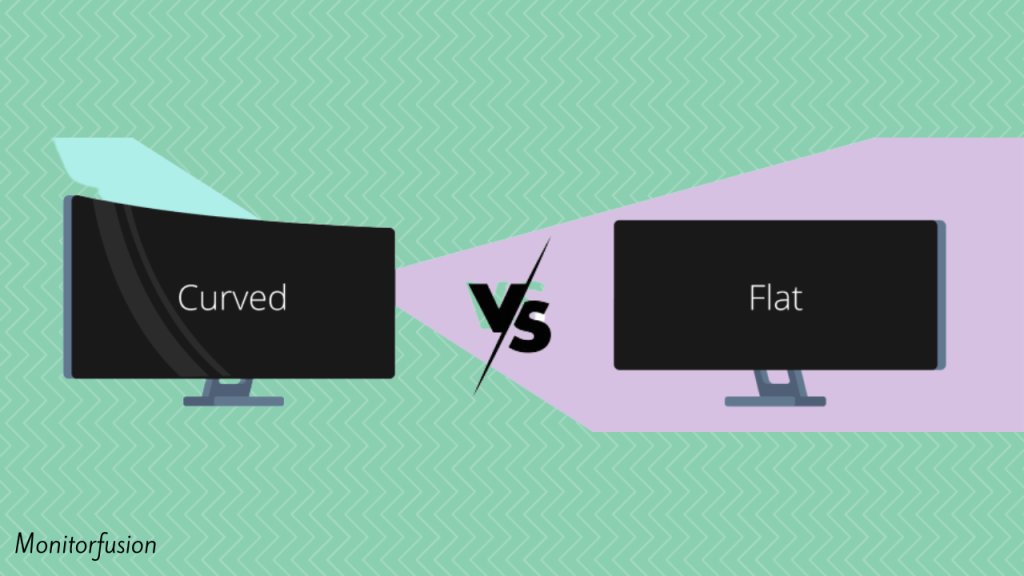
When you’re working at your desk, you need to be able to adjust your monitor to your needs. You might not want to sit in a straight-backed chair all day, so a curved monitor lets you move around without having to worry about getting your back hurting.
Further, a curved monitor is easier to reach across your body, which can make it easier for you to use your keyboard and mouse.
The Cons Of Curved Monitors- They are more expensive than Flat Screen monitors.
The initial purchase price of a curved monitor is more than just the cost of the monitor itself. You also have to factor in the cost of an adjustable desk, the cost of the stand, the cost of any software or other add-ons you might want to buy, and so on.
If you are like most people, the biggest reason you might buy a curved monitor is simply that it looks cool. But if that’s true, you should seriously consider buying a flat-screen instead. They Are Harder To View From An Angled Position. Most people have trouble looking at something from an angle.
Flat Monitors vs. Curved Monitors: Which One is Better?
Compared to a flat screen, a curved screen can make your life easier in many ways. It can improve your ability to see what’s happening on your computer monitor.
It can make it easier for you to read documents and books, it can reduce eyestrain and it can make it possible for you to work in areas where there isn’t a lot of natural light.
However, when you look at all of these benefits, you have to also consider the cost of a curved display. n Flat screens will still be around in a few years.
Flat screens are very durable, which makes them much less expensive than most people think. Curved screens will be around for a long time, but their initial price will make them harder to afford.
They will be more expensive than flat screens over the long term. But you should only buy a curved monitor if the benefits of having one greatly outweigh the costs.
If you have a choice, you should always go with the cheaper option. In most cases, that will be a flat-screen. If you do decide to get a curved monitor, it will likely cost you about the same as three or four flat screens.
Do not spend a fortune on a curved display. The biggest mistake you could make is paying too much for one. Don’t forget that a curved monitor will still be expensive even if you buy it from a discount retailer!
Even if you buy a brand new, factory-sealed monitor from a discount retailer like Wal-Mart, you will still be paying a premium over and above what you would pay for a comparable flat screen.
Just how much of a premium depends on a few different factors. First, it depends on whether you are buying a business brand or a consumer brand. If it’s a business brand, you should expect to pay at least $50 more than you would if you were buying a consumer brand.
However, that 50 bucks can easily add up to $300 or more when you start comparing prices between retailers. Further, you should also check and see if the retailer is offering any type of financing.
Conclusion
Curved displays are great for offices and homes with lots of natural light. They offer ergonomic advantages, which makes them better for your eyes and your back. If you have a choice, go with a flat-screen monitor.
The biggest reason curved displays are popular is that they fill up more of your peripheral vision, which allows you to focus on your work instead of being distracted by what’s happening around you.
If you’re watching or playing a game, this engrossing experience can be hard to beat. The downside to this style of monitor is that its curved display can catch light from more angles.
The glare, which can make part of the screen more difficult to look at, negates the biggest advantage curved displays have over flat-panel monitors.
If you have a desk that’s too small for your monitor, then it will be uncomfortable to work with. A curved monitor will fit a larger desk, which makes it more comfortable. But if you have a large desk, you might not notice much of a difference between a curved and a flat monitor.
That was all about our article on “Curved vs Flat Monitor – Which Should You Choose?”. Thanks for reading!
- Write Smarter, Not Harder: Grammarly’s Next-Level Writing Support - July 15, 2024
- Is LOFT Worth It? A Detailed Review of Its Features and Benefits - May 6, 2024
- Weebly: The Ultimate Platform for Creating Stunning Websites - April 9, 2024
- bet365: the ultimate casino destination for indian players
- win big and have fun with bet365: india\'s best casino site
- bet365: the only casino site you need for indian gaming fun
- join the fun at bet365: india\'s most popular casino site
- discover the best casino site in india: bet365
- play the best casino games and claim huge bonuses at bet365
- get ready to win big at bet365: india\'s premier casino site
- bet365: the online casino site that offers the best rewards
- why bet365 is the best casino site for indian players who love to win
- looking for the best casino site in india? look no further than bet365
- bet365: the casino site that offers the best gaming variety for indian players
- experience the thrill of casino gaming with bet365
- get your casino gaming fix at bet365, india\'s leading site
- join the fun and win big with bet365: india\'s top casino site
- discover the best casino site in india for big jackpots: bet365
- bet365: the casino site that offers the best experience for indian players
- play your favorite casino games at bet365, india\'s most trusted site
- why bet365 is the only casino site you need for indian gaming fun
- bet365: the premier casino site for indian players who love to win
- get in on the action at bet365, india\'s best online casino